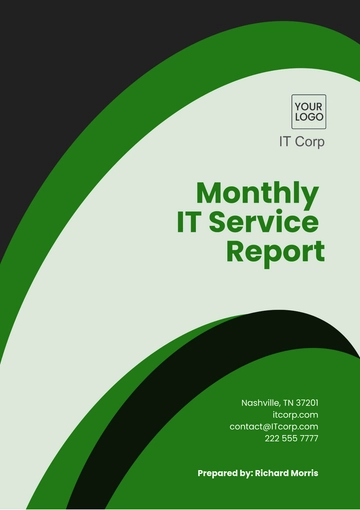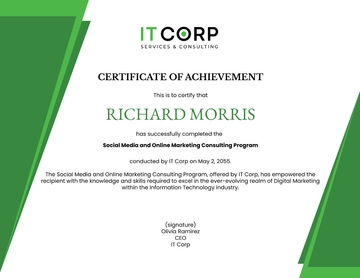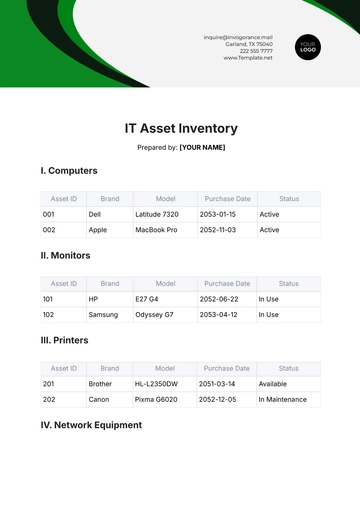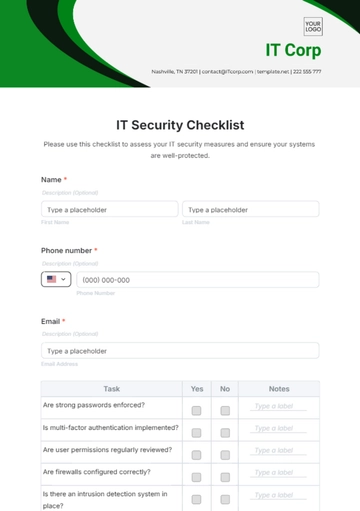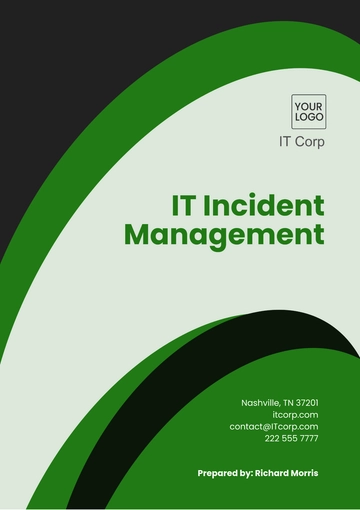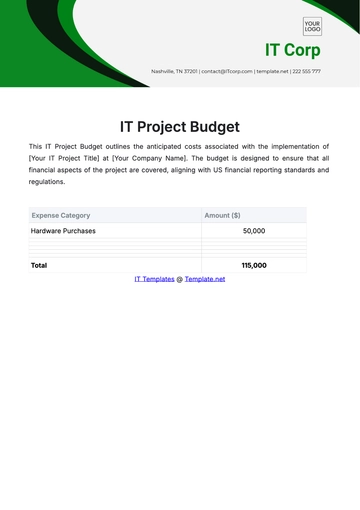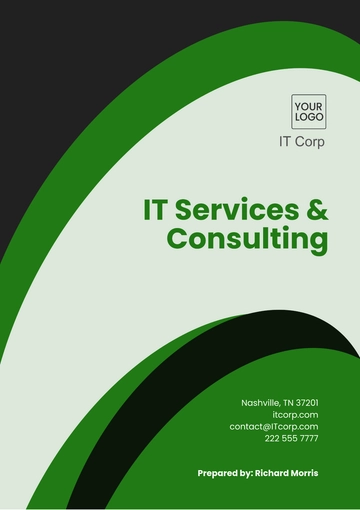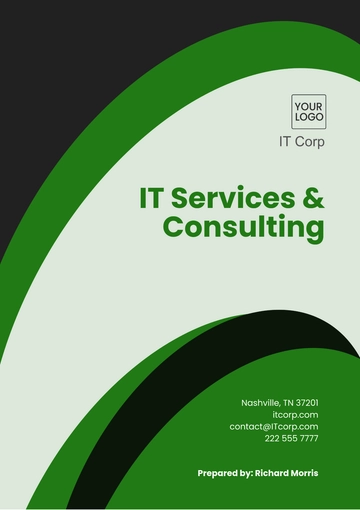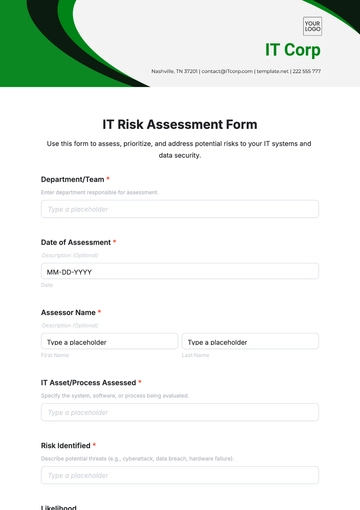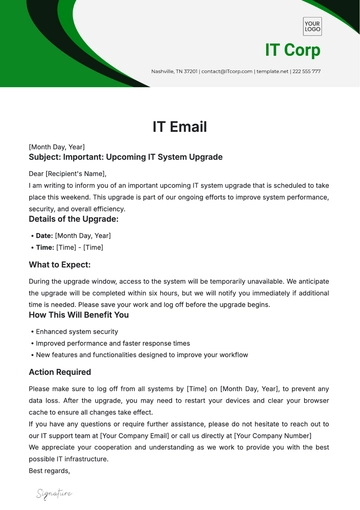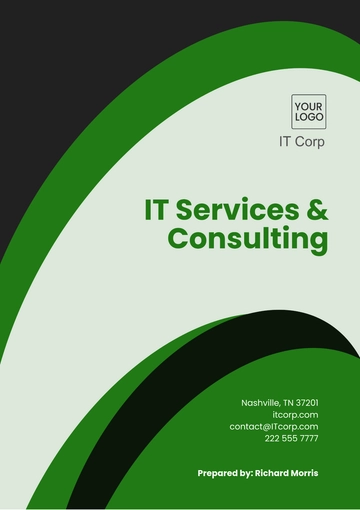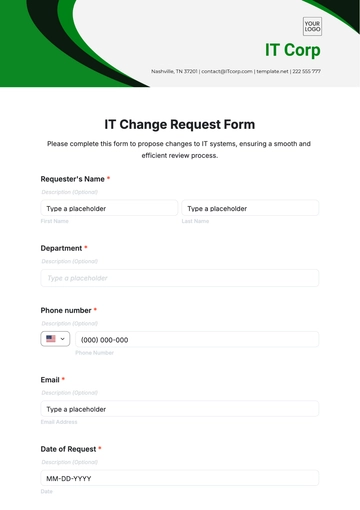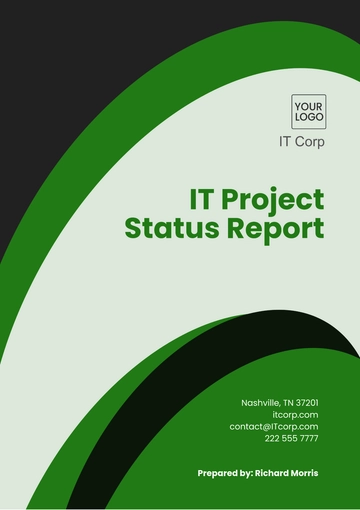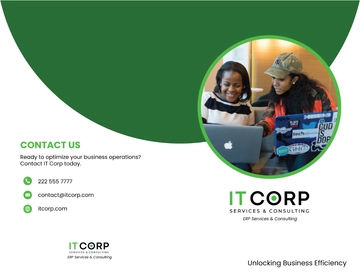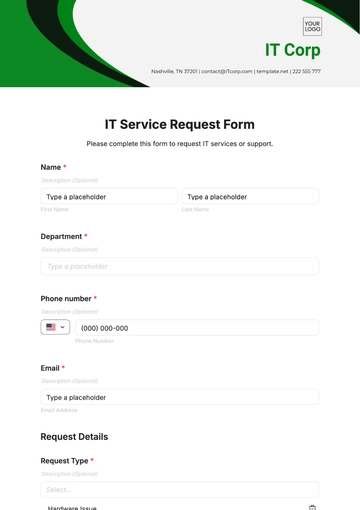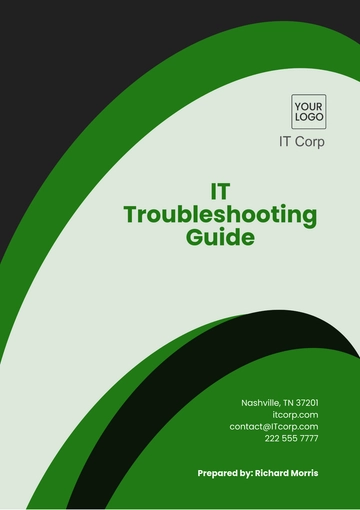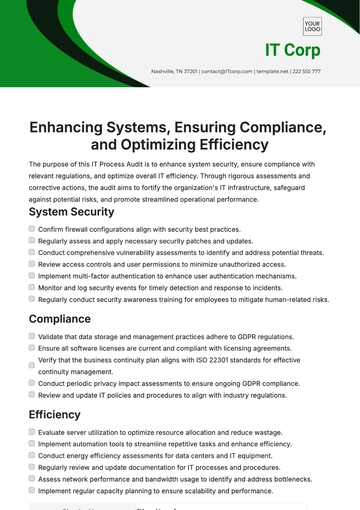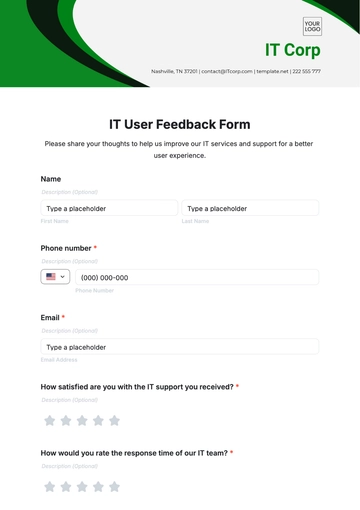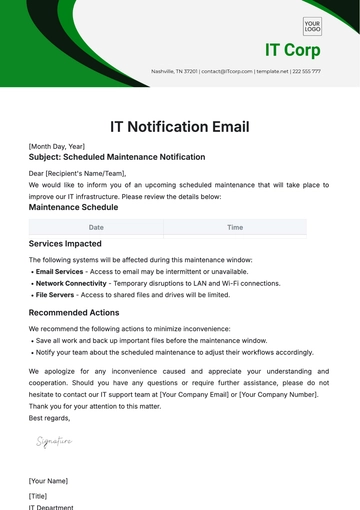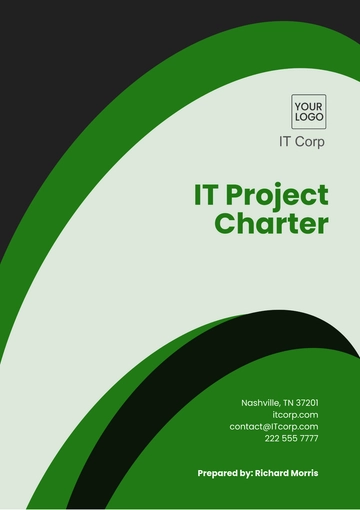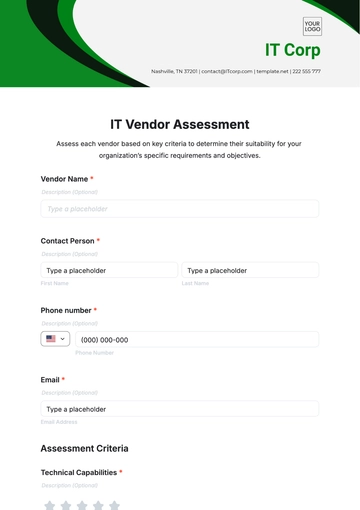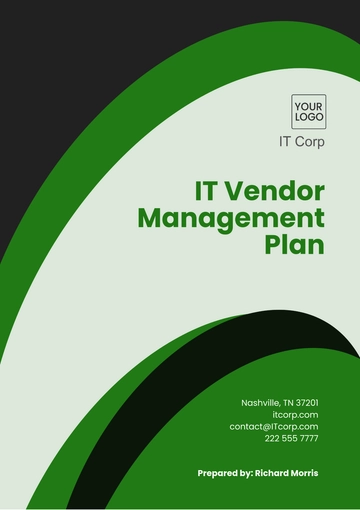IT Management Requirements
1. Introduction
The IT Management Requirements document specifies the necessary criteria and specifications for the management and administration of IT systems within [Your Company Name]. This document aims to align IT initiatives with business objectives, enhance operational efficiency, and ensure compliance with industry standards.
2. Objectives
The primary objectives of these IT Management Requirements are:
Ensure Alignment with Business Goals: Align IT systems and processes with the organization’s strategic objectives.
Enhance Operational Efficiency: Improve the efficiency of IT operations by streamlining processes and reducing downtime.
Guarantee Compliance: Ensure adherence to regulatory standards such as GDPR and industry best practices.
Optimize Resource Utilization: Maximize the use of IT resources, including hardware and software, to minimize costs and improve performance.
3. Stakeholders
Stakeholder Group | Role and Responsibility |
|---|
IT Managers | Oversee the implementation and management of IT systems. |
System Administrators | Maintain and support IT infrastructure and services. |
Developers | Design and develop IT solutions based on requirements. |
End Users | Utilize IT systems and provide feedback on their effectiveness. |
Senior Management | Provide strategic direction and approve major IT initiatives. |
4. Functional Requirements
4.1 System Capabilities
User Management: The system must allow administrators to create, modify, and delete user accounts efficiently, supporting role-based access control.
Data Management: Capabilities must include secure storage, retrieval, and backup of organizational data, with redundancy to prevent data loss.
Reporting: The system should include tools to generate performance and usage reports, including real-time dashboards and historical data analysis.
Integration: The IT solution must integrate seamlessly with existing enterprise systems, including CRM, ERP, and email platforms.
4.2 Performance
Response Time: The system must respond to user queries within 2 seconds to ensure a smooth user experience.
Availability: Systems should maintain 99.9% uptime, with scheduled maintenance windows communicated in advance.
Scalability: The solution should handle a 25% increase in user load without significant performance degradation, allowing for future growth.
5. Non-Functional Requirements
5.1 Security
Access Control: Implement role-based access controls to restrict unauthorized access to sensitive data and systems.
Data Encryption: All sensitive data must be encrypted both in transit and at rest to protect against unauthorized access and breaches.
Audit Trails: Maintain detailed logs of all system access and modifications to support auditing and compliance efforts.
5.2 Usability
User Interface: The system must feature an intuitive and user-friendly interface designed to minimize training requirements and enhance productivity.
Training: Provide comprehensive training materials and sessions for end users, including user guides and hands-on workshops.
5.3 Compliance
Regulatory Compliance: Ensure the IT systems adhere to GDPR, HIPAA, and other relevant regulations to avoid legal and financial penalties.
Industry Standard: Follow best practices as outlined by ITIL and ISO/IEC standards to ensure high-quality service delivery and continuous improvement.
6. Constraints
Budgetary Limitations: All IT projects must adhere to the allocated budget of $500,000 per year, including hardware, software, and personnel costs.
Technical Limitations: The solution must be compatible with existing hardware, including servers and networking equipment, and integrated with current software applications.
Time Constraints: Projects must be completed within a 6-month timeline, with milestones and deliverables defined in the project plan.
7. Assumptions
Stable Infrastructure: Assumes that the existing IT infrastructure, including network and hardware, will remain stable throughout the project.
User Cooperation: Assumes that end users will participate in required training sessions and provide timely feedback for system improvements.
Vendor Reliability: Assumes that third-party vendors will deliver products and services as specified in their contracts and within agreed-upon timelines.
8. Acceptance Criteria
Criteria | Description |
|---|
Functional Validation | It is necessary to fully meet all functional requirements. |
Performance Benchmarks | Systems must meet or exceed specified performance metrics. |
Security Audits | Successful completion of security audits without major findings. |
User Acceptance Testing | Positive feedback from end users during the testing phases. |
9. Glossary
GDPR: General Data Protection Regulation.
HIPAA: Health Insurance Portability and Accountability Act.
ITIL: Information Technology Infrastructure Library.
ISO/IEC: International Organization for Standardization / International Electrotechnical Commission.
Requirements Templates @ Template.net

